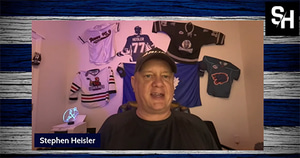JuniorHockey.io
ULTIMATE COMMUNITY OWNERSHIP PLAN Community ownership could be junior hockey's next big thing
Apr 21, 2025
Play: AI Text To Voice
How could it work?
An existing junior team wants to create an entity that ultimately takes over 100% ownership of the team. Maybe the market has been the home of minor professional hockey for years but the economics have changed so junior hockey becomes more of a realistic model.
This idea brings the junior team to town with a plan for the season ticket base to essentially take over ownership of the franchise. We are going to call these owners the Equity Owners’ Group. For giggles, let’s set the franchise value at $1,000,000. We are also going to set the EOG’s special season ticket price at $400. Half of this money goes towards the EOG membership, the other to the team.
The EOG is limited to just 2,000 seat holders. Each seat represents a single vote. Businesses are encouraged to purchase as many seats as possible. Inside the arena, the EOG member gets to select their seat(s) on a first come, first serve basis.
The team sets up a trust account at one of the local banks for the team’s EOG. The EOG will have to form a non-profit entity and also create a board in order to gain control of the EOG’s Fund. Each person that elects to take part in the EOG plan must commit to renewing their season tickets at $400 per season. In the event that the EOG member elects to not renew their seats, they forfeit their EOG membership to the EOG board for redistribution.
As the EOG membership grows, the original operator is paid in $100,000 increments for a 10% stake in the team. Once the EOG is able to gain 100% ownership of the team, they will have the incredible fortune of also having a $800,000 a year base budget to start the season with. This is before a single additional ticket or advertising package is sold.
This program is also great for reducing costs associated with staffing, billeting, and generating ticket and advertising sales. There is also that added benefit of having 2,000 owners on the street trying to get their friends, families’, and customers to come out to the games.
As a non-profit entity, there is that guarantee that any additional generated funds are going to be put back into the team. The purchase of a bus, fitness training center, or even adding additional staff to the team would elevate the developmental experience for the players.
This type of structure could be the perfect system for now, or about to be, defunct professional markets or dysfunctional existing junior teams in markets that could otherwise be very supportive.
